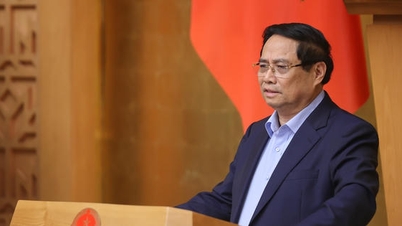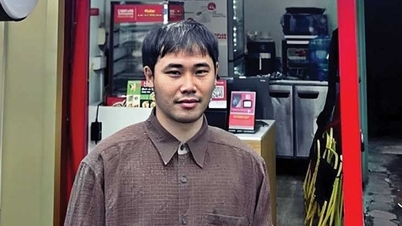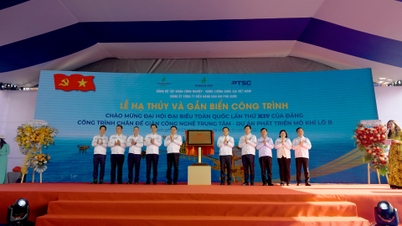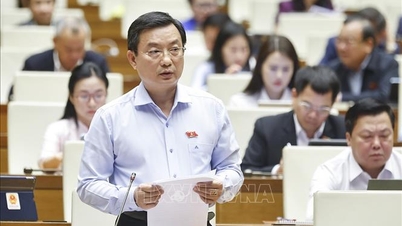 |
| Dr. Mathew Shafaghi. |
In the context of the US government increasing tariff policies, how do you assess the impact of these policies on the health of the USD?
The direction of the USD in the next 6 months will be determined by the interaction between the US administration's tariff policy and the Fed's monetary policy easing path. Tariffs act as a short-term counterweight to the monetary easing trend.
Specifically, while the path of interest rate cuts is biased towards weakening the USD, tariffs could be enough to create inflation and geopolitical risks, delay the Fed’s decision or promote safe-haven flows into the USD. However, over the next 6 months, the balance of risks is still slightly tilted towards the USD continuing to weaken moderately, unless tariffs become excessive or highly disruptive.
If the Fed cuts interest rates as expected, will it create favorable conditions for the State Bank of Vietnam (SBV) to continue loosening monetary policy in the coming time?
If the Fed cuts interest rates as scheduled, it could create more favorable conditions for the SBV to consider further loosening monetary policy. Specifically, the Fed's interest rate cut will reduce external pressure, giving the SBV more room to reduce operating interest rates without worrying about capital outflows or causing devaluation pressure on the VND.
In addition, the global monetary easing trend has created a favorable environment for lower funding costs, stronger capital inflows and better financial stability in emerging markets. This has strengthened the SBV's confidence in supporting domestic economic growth.
If domestic inflation remains under control and external inflationary pressures ease due to the low global interest rate environment, the SBV will be in a better position to cut interest rates without affecting exchange rate stability. However, I believe that it is necessary to closely monitor imported inflation, especially energy and food prices which are sensitive to exchange rate fluctuations.
Vietnam’s economy relies heavily on exports and foreign direct investment. A more dovish Fed stance will help improve global demand, especially from the US – Vietnam’s leading trading partner. At the same time, lower VND interest rates will stimulate credit growth, consumption and investment, supporting the recovery process, as well as post-pandemic structural transformation, boosting economic growth.
According to you, what will be the trend of VND/USD exchange rate in the near future?
The VND/USD exchange rate will be affected by many factors: the Fed's monetary policy and USD fluctuations, international tax and trade policies, foreign exchange intervention activities, foreign exchange reserves of the State Bank, as well as internal factors of the Vietnamese economy.
The VND/USD exchange rate may increase slightly in the coming time, approaching the 26,300-26,400 VND/USD range in the fourth quarter of 2025, with the central exchange rate forecast at 26,350 VND/USD. However, risks such as a stronger USD or trade tensions may push the exchange rate up, while a more dovish policy from the Fed and positive signals from global trade may limit the exchange rate around the threshold of 26,000 VND/USD.
Faced with global market fluctuations and exchange rate risks, what risk management strategies should Vietnamese export enterprises apply to ensure operational and financial stability?
To protect operations and financial stability, export enterprises need to build a multi-layered, proactive exchange rate risk management strategy with the following pillars: reducing profit fluctuations due to exchange rates with hedging tools such as forward contracts, options or natural balances; diversifying exchange rate risks, avoiding dependence on a single currency pair, especially VND/USD, expanding markets to the EU, Japan, ASEAN... to increase the proportion of EUR, JPY, SGD in revenue.
In addition, it is necessary to prevent profit margin erosion by applying price adjustment clauses in contracts, regularly reviewing and renegotiating, monitoring competitor prices according to each exchange rate environment; building an exchange rate risk dashboard; preparing for short-term shocks (maintaining foreign currency liquidity reserves, especially USD and major trading currencies); considering converting debt to VND, limiting short-term borrowing in foreign currency...
Source: https://baodautu.vn/xu-huong-cua-usd-bi-chi-phoi-trong-nua-cuoi-nam-2025-d321176.html







































































































![Dong Nai OCOP transformation: [Article 4] Reaching national standard products](https://vphoto.vietnam.vn/thumb/402x226/vietnam/resource/IMAGE/2025/11/11/1762825820379_4702-cac-san-pham-trai-cay-chung-nhan-ocop-nongnghiep-174649.jpeg)



![Dong Nai OCOP transition: [Article 3] Linking tourism with OCOP product consumption](https://vphoto.vietnam.vn/thumb/402x226/vietnam/resource/IMAGE/2025/11/10/1762739199309_1324-2740-7_n-162543_981.jpeg)







Comment (0)